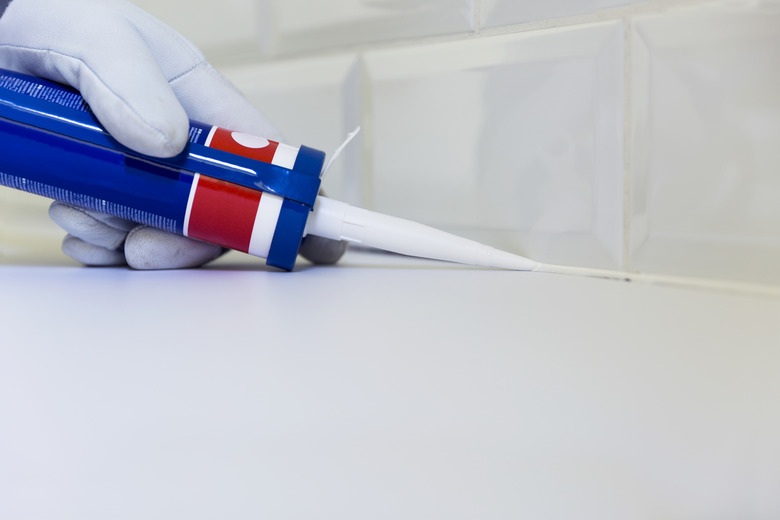How To Remove Mold From Silicone
They're everywhere ... mold spores, that is. The world is host to thousands of mold strains, spores are continually flying through the air, and you're probably breathing some right now. Don't worry — the environment inside your body will kill them before they ever have a chance to take root and grow, and even if they did, very few strains would harm you.
The growing conditions are much more suitable on solid and moist surfaces, including the silicone caulk in your bathroom and kitchen and the silicone seals around your reusable water bottles. When they do grow, they turn the silicone black, and nothing looks worse that blackened silicone in a bathroom or on a bottle you're about to bring to your lips. You need to learn to remove mold from silicone the right way.
Should You Reach for Bleach?
There's no doubt about it — bleach is a strong disinfectant, and it does kill mold. Killing the mold isn't the end of the story, however, because even dead mold can cause allergic reactions. So, simply spraying the caulk in your bathroom with chlorine bleach or giving it a cursory wipe with a bleach-soaked rag isn't going to do the trick.
For one thing, the silicone will still be discolored, and for another, there's a chance the mold may grow back. Bleach doesn't always penetrate into the nooks where spores have settled, and any spores that don't come in contact with it will sprout new colonies. To do a proper mold cleanup, you have to physically remove all of it, and while you can do that with bleach, there are other effective disinfectants that aren't quite as noxious.
Household Mold Cleaners
If it's bathroom or kitchen caulk you need to clean, you'll find either baking soda or vinegar more pleasant to work with than bleach. Don't use them in combination, though, because they react to form a carbon dioxide/saltwater fizz that looks like it's cleaning, but it really isn't. The best use of this fizz is for deodorizing drains, but it doesn't have much cleaning power.
An effective way to use this pair of cleaning agents is in a two-step process. Start by making a paste with baking soda and water and then use it with a toothbrush or scrub brush to physically remove as much of the discoloration as you can. When the silicone is looking clean, rinse it with water and then wipe it down with a generous amount of a 50/50 solution of vinegar and water. Vinegar is almost as effective a disinfecting agent as bleach and should take care of any lingering spores you didn't manage to scrub off.
The Caulk Is Still Black
If you fail to remove the discoloration with this two-step treatment, it's probably because the mold is growing behind the caulk. It's pretty common in wet locations, like bathrooms, for moisture to seep behind the caulk, and if moisture can get there, so can the mold spores. Unfortunately, there's no way to reach that mold and kill it even if you pour bleach directly on the caulk.
The truth is that once you have mold growing behind silicone caulk, you have to remove the caulk to get rid of it. The job may be easier than you think because the moisture and the mold have usually loosened the caulk's grip on the wall, so you can usually pull it off or cut it off with a knife. There's no easier way. Bathroom mold removal products won't dissolve it; at best, they will soften it to make pulling and cutting easier.
